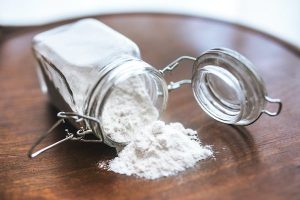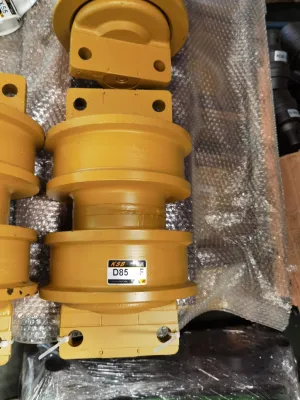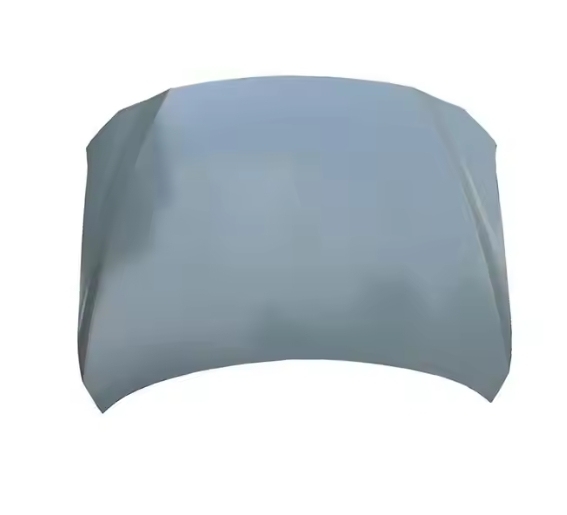Calcined kaolin is to sinter kaolin in a calcining furnace to a certain temperature and time, so that its physical and chemical properties will change to meet certain requirements.

Introduction #
Kaolin is an inorganic non-metallic mixture.
Compared with uncalcined kaolin, calcined kaolin has reduced bound water content, increased silica and aluminum trioxide content, increased active points, changes in structure, smaller and uniform particle size, and is filled with uncalcined kaolin. Compared with NR rubber, the vulcanization characteristic curves of low-temperature calcined kaolin-filled NR rubber are basically the same. The Sauer type A hardness remains unchanged and the tensile strength increases. The physical properties of both meet the requirements of the industry standard for non-transparent soles of sports shoes.
Currently, it is widely used in ceramics, rubber, plastics, artificial leather, self-cement, refractory materials, chemicals and other industries as well as agriculture. With the further improvement of kaolin beneficiation technology, the application scope of kaolin will become increasingly wider. The coalfield geological system preparation unit can proceed from the actual situation and base on the kaolin resources and market demand in the coal-bearing strata. Kaolin is a non-metallic mineral ubiquitous in nature. In the past, it was generally used in the production of ceramics, refractory materials and a small amount of filler mixed in plastics and rubber. With the increasing development of various fields of the national economy, people are paying more and more attention to the deep processing of kaolin, because this can not only obtain new materials with special properties, but also improve economic benefits. One of the deep processing methods of kaolin is to further heat, roast, and dehydrate the kaolin that has been washed, dried, and ground to turn it into metakaolin, which can be used as a filler in plastic cables to improve the insulation of the cable sheath. performance. Commonly used footwear rubber fillers mainly include organic fillers and inorganic fillers. The former includes reclaimed rubber and recycled materials, etc., and the latter includes white carbon black, calcium carbonate, titanium dioxide, magnesium carbonate, magnesium oxide, carbon black and Zinc oxide powder, etc. Kaolin is a new type of rubber product filler developed in recent years .
However, all applications of kaolin must be processed into fine powder before it can be added to other materials and fully integrated.
nature
#
whiteness and brightness
#
Whiteness is one of the main parameters of kaolin’s technological performance. Kaolin with high purity is white. The whiteness of kaolin clay is divided into natural whiteness and calcined whiteness. For ceramic raw materials, the whiteness after calcining is more important. The higher the calcined whiteness, the better the quality. Ceramic technology stipulates that drying at 105°C is the grading standard for natural whiteness, and calcining at 1300°C is the grading standard for calcined whiteness. Whiteness can be measured with a whiteness meter. A whiteness meter is a device that measures the reflectivity of light with a wavelength of 3800-7000Å (i.e. angstrom, 1 angstrom = 0.1 nanometer). In the whiteness meter, the reflectance of the sample to be tested is compared with that of the standard sample (such as BaSO4, MgO, etc.), which is the whiteness value (for example, a whiteness of 90 means that it is equivalent to 90% of the reflectance of the standard sample).
Brightness is a process property similar to whiteness, which is equivalent to the whiteness under 4570Å (angstrom) wavelength light irradiation.
The color of kaolin is mainly related to the metal oxides or organic matter it contains . Generally, those containing Fe2O3 are rose red and brown; those containing Fe2+ are light blue and light green; those containing MnO2 are light brown; those containing organic matter are light yellow, gray, green, black and other colors. The presence of these impurities reduces the natural whiteness of kaolin. The iron and titanium minerals also affect the calcined whiteness, causing stains or melting scars on the porcelain.
Particle size distribution
#
Particle size distribution refers to the proportion (expressed in percentage) of particles in natural kaolin within a given continuous range of different particle sizes (expressed in meshes with millimeter or micron mesh openings). The particle size distribution characteristics of kaolin are of great significance to the selection of ores and process applications. Its particle size has a great impact on its plasticity, mud viscosity, ion exchange capacity, molding performance, drying performance, and firing performance. Kaolin ore requires technical processing. Whether it is easy to process to the fineness required by the process has become one of the criteria for evaluating the quality of the ore. Various industrial sectors have specific particle size and fineness requirements for kaolin clay for different uses. For example, the United States requires 90-95% of kaolin used as coatings to have a content less than 2 μm, and 78-80% of papermaking fillers less than 2 μm.
plasticity
#
The mud formed by the combination of kaolin and water can deform under the action of external force. The property of retaining this deformation after the external force is removed is called plasticity. Plasticity is the basis of the kaolin molding process in ceramic bodies and is also the main process technology indicator. Plasticity index and plasticity index are usually used to express the degree of plasticity. The plasticity index refers to the liquid limit moisture content of kaolin clay material minus the plastic limit moisture content, expressed as a percentage, that is, W plasticity index = 100 (W liquid limit – W plastic limit). The plasticity index represents the molding performance of kaolin clay material. It can be obtained by directly measuring the load and deformation of the mud ball when it is crushed under pressure using a plasticity meter. It is expressed in kg·cm. The higher the plasticity index, the better the molding performance. The plasticity of kaolin can be divided into four levels.

 April 1, 2024
April 1, 2024 










